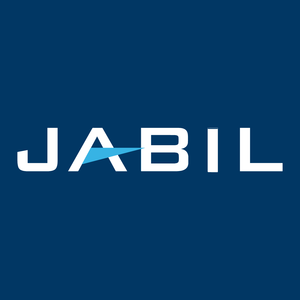
CarGurus (CARG)
We see potential in CarGurus. Despite its slow growth, its highly profitable model gives it a margin of safety during times of stress.― StockStory Analyst Team
1. News
2. Summary
Why CarGurus Is Interesting
Bringing transparency to a sometimes opaque process, CarGurus (NASDAQ:CARG) is a digital marketplace where auto dealers can connect with potential customers and where car buyers can browse, purchase, and obtain financing.
- Disciplined cost controls and effective management have materialized in a strong EBITDA margin, and its rise over the last few years shows it refined its expense structure
- Customer spending is rising as the company has focused on monetization over the last two years, leading to 11.3% annual growth in its average revenue per user
- One risk is its annual sales declines of 18.4% for the past three years show its products and services struggled to connect with the market


CarGurus has some noteworthy aspects. If you like the story, the price looks reasonable.
Why Is Now The Time To Buy CarGurus?
High Quality
Investable
Underperform
Why Is Now The Time To Buy CarGurus?
CarGurus’s stock price of $36 implies a valuation ratio of 10.4x forward EV/EBITDA. Scanning the consumer internet peers, we conclude that CarGurus’s valuation is warranted for the business quality.
If you think the market is not giving the company enough credit for its fundamentals, now could be a good time to invest.
3. CarGurus (CARG) Research Report: Q3 CY2025 Update
Online auto marketplace CarGurus (NASDAQ:CARG) announced better-than-expected revenue in Q3 CY2025, with sales up 3.2% year on year to $238.7 million. Guidance for next quarter’s revenue was better than expected at $238.5 million at the midpoint, 0.6% above analysts’ estimates. Its non-GAAP profit of $0.57 per share was 3.7% above analysts’ consensus estimates.
CarGurus (CARG) Q3 CY2025 Highlights:
- Revenue: $238.7 million vs analyst estimates of $235 million (3.2% year-on-year growth, 1.6% beat)
- Adjusted EPS: $0.57 vs analyst estimates of $0.55 (3.7% beat)
- Adjusted EBITDA: $78.67 billion vs analyst estimates of $76.39 million (32,957% margin, significant beat)
- Revenue Guidance for Q4 CY2025 is $238.5 million at the midpoint, roughly in line with what analysts were expecting
- Adjusted EPS guidance for Q4 CY2025 is $0.64 at the midpoint, above analyst estimates of $0.61
- EBITDA guidance for Q4 CY2025 is $87 million at the midpoint, above analyst estimates of $84.27 million
- Operating Margin: 22.9%, up from 11.9% in the same quarter last year
- Free Cash Flow Margin: 26.8%, down from 27.9% in the previous quarter
- Paying Dealers: 33,673, up 1,989 year on year
- Market Capitalization: $3.38 billion
Company Overview
Bringing transparency to a sometimes opaque process, CarGurus (NASDAQ:CARG) is a digital marketplace where auto dealers can connect with potential customers and where car buyers can browse, purchase, and obtain financing.
CarGurus was founded in 2006 by Langley Steinert, a co-founder of TripAdvisor, who saw an opportunity to create a better experience for car buyers–who often feel uninformed–and sellers–who sometimes struggle to reach potential buyers. CarGurus provides an end-to-end platform where car buyers and sellers can conduct business in a transparent and digital way all the way from sourcing for dealers to consumer browsing to buying/selling to financing.
The company's customers include individual car buyers and sellers (retail), as well as dealerships and other automotive businesses (wholesale). CarGurus generates revenue through advertising and subscription services for dealerships. These dealer services such as inventory management and lead generation help dealers gain more visibility into their business and connect with potential buyers
The majority of car dealerships in the United States list their inventory on the CarGurus platform, which means extensive inventory and selection. Additionally, features such as the CarGurus Instant Market Value tool, which calculates the fair market value of a car based on various factors, make it easier for buyers to make informed purchasing decisions
4. Online Marketplace
Marketplaces have existed for centuries. Where once it was a main street in a small town or a mall in the suburbs, sellers benefitted from proximity to one another because they could draw customers by offering convenience and selection. Today, a myriad of online marketplaces fulfill that same role, aggregating large customer bases, which attracts commission-paying sellers, generating flywheel scale effects that feed back into further customer acquisition.
Competitors in the online auto market include Carvana (NYSE:CVNA), Cars.com (NYSE:CARS), and Vroom (NASDAQ:VRM).
5. Revenue Growth
A company’s long-term performance is an indicator of its overall quality. Any business can put up a good quarter or two, but many enduring ones grow for years. Over the last three years, CarGurus’s demand was weak and its revenue declined by 18.4% per year. This was below our standards and is a rough starting point for our analysis.
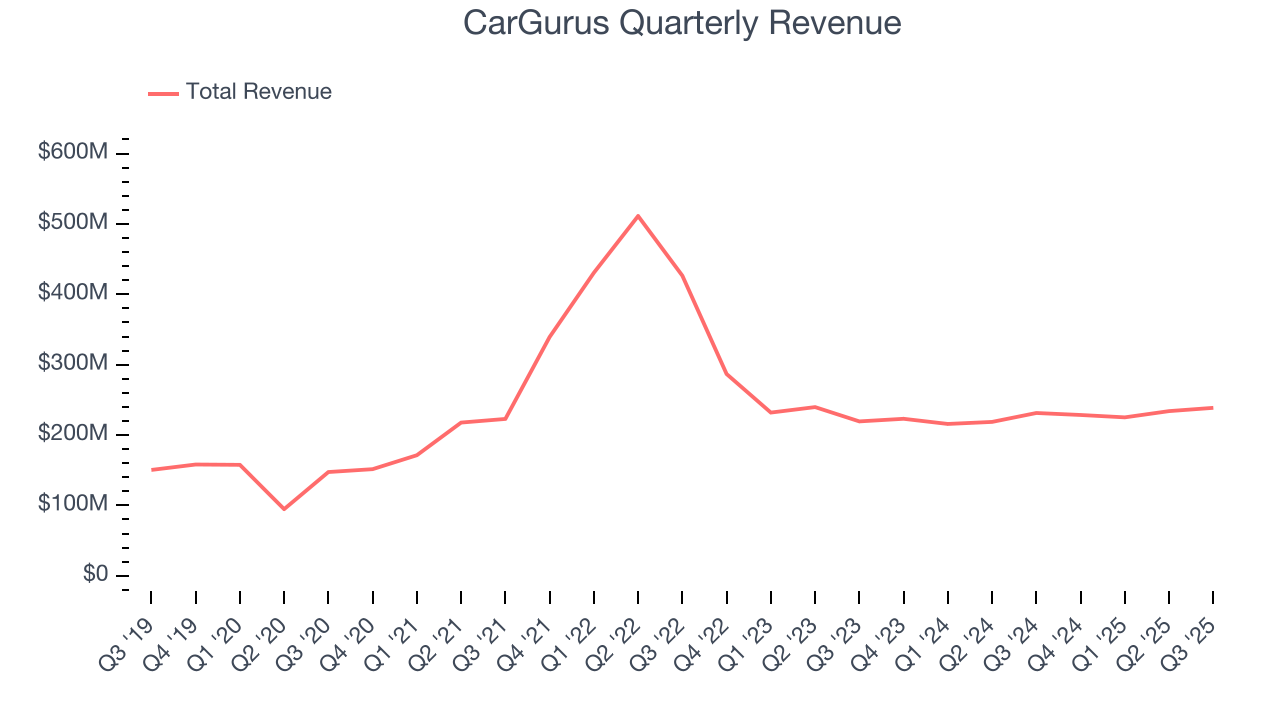
This quarter, CarGurus reported modest year-on-year revenue growth of 3.2% but beat Wall Street’s estimates by 1.6%. Company management is currently guiding for a 4.4% year-on-year increase in sales next quarter.
Looking further ahead, sell-side analysts expect revenue to grow 3.9% over the next 12 months. While this projection suggests its newer products and services will spur better top-line performance, it is still below the sector average.
6. Paying Dealers
User Growth
As an online marketplace, CarGurus generates revenue growth by increasing both the number of users on its platform and the average order size in dollars.
Over the last two years, CarGurus’s paying dealers, a key performance metric for the company, increased by 2.5% annually to 33,673 in the latest quarter. This growth rate is one of the lowest in the consumer internet sector. If CarGurus wants to accelerate growth, it likely needs to engage users more effectively with its existing offerings or innovate with new products. 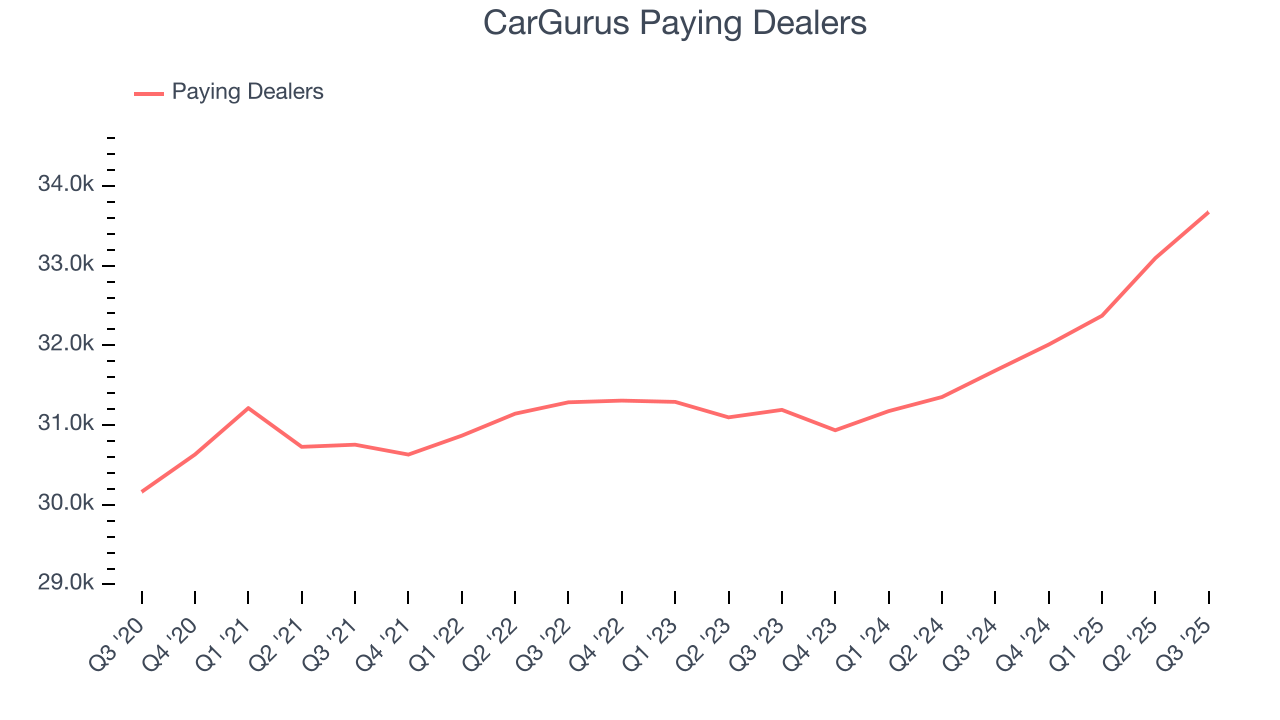
In Q3, CarGurus added 1,989 paying dealers, leading to 6.3% year-on-year growth. The quarterly print was higher than its two-year result, suggesting its new initiatives are accelerating user growth.
Revenue Per User
Average revenue per user (ARPU) is a critical metric to track because it measures how much the company earns in transaction fees from each user. ARPU also gives us unique insights into a user’s average order size and CarGurus’s take rate, or "cut", on each order.
CarGurus’s ARPU growth has been exceptional over the last two years, averaging 11.3%. Its ability to increase monetization while growing its paying dealers demonstrates its platform’s value, as its users are spending significantly more than last year. 
This quarter, CarGurus’s ARPU clocked in at $6,492. It grew by 7.5% year on year, faster than its paying dealers.
7. Gross Margin & Pricing Power
For online marketplaces like CarGurus, gross profit tells us how much money the company gets to keep after covering the base cost of its products and services, which typically include payment processing, hosting, and bandwidth fees in addition to the costs necessary to onboard buyers and sellers, such as identity verification.
CarGurus’s gross margin is one of the highest in the consumer internet sector, an output of its asset-lite business model and strong pricing power. It also enables the company to fund large investments in product and marketing during periods of rapid growth to achieve higher profits in the future. As you can see below, it averaged an elite 84.7% gross margin over the last two years. Said differently, roughly $84.69 was left to spend on selling, marketing, and R&D for every $100 in revenue. 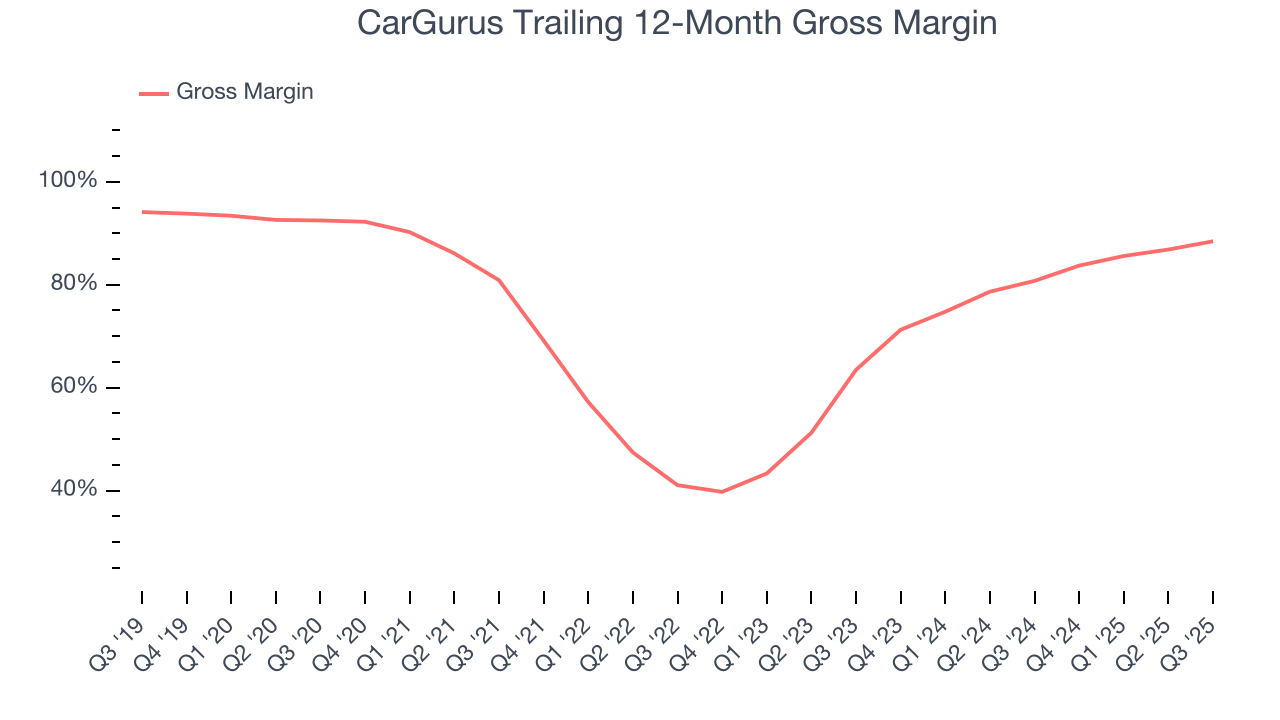
In Q3, CarGurus produced a 89.5% gross profit margin, marking a 6.3 percentage point increase from 83.1% in the same quarter last year. CarGurus’s full-year margin has also been trending up over the past 12 months, increasing by 7.7 percentage points. If this move continues, it could suggest a less competitive environment where the company has better pricing power and leverage from its growing sales on the fixed portion of its cost of goods sold (such as servers).
8. User Acquisition Efficiency
Unlike enterprise software that’s typically sold by dedicated sales teams, consumer internet businesses like CarGurus grow from a combination of product virality, paid advertisement, and incentives.
CarGurus does a decent job acquiring new users, spending 41.1% of its gross profit on sales and marketing expenses over the last year. This decent efficiency indicates relatively solid competitive positioning, giving CarGurus the freedom to invest its resources into new growth initiatives.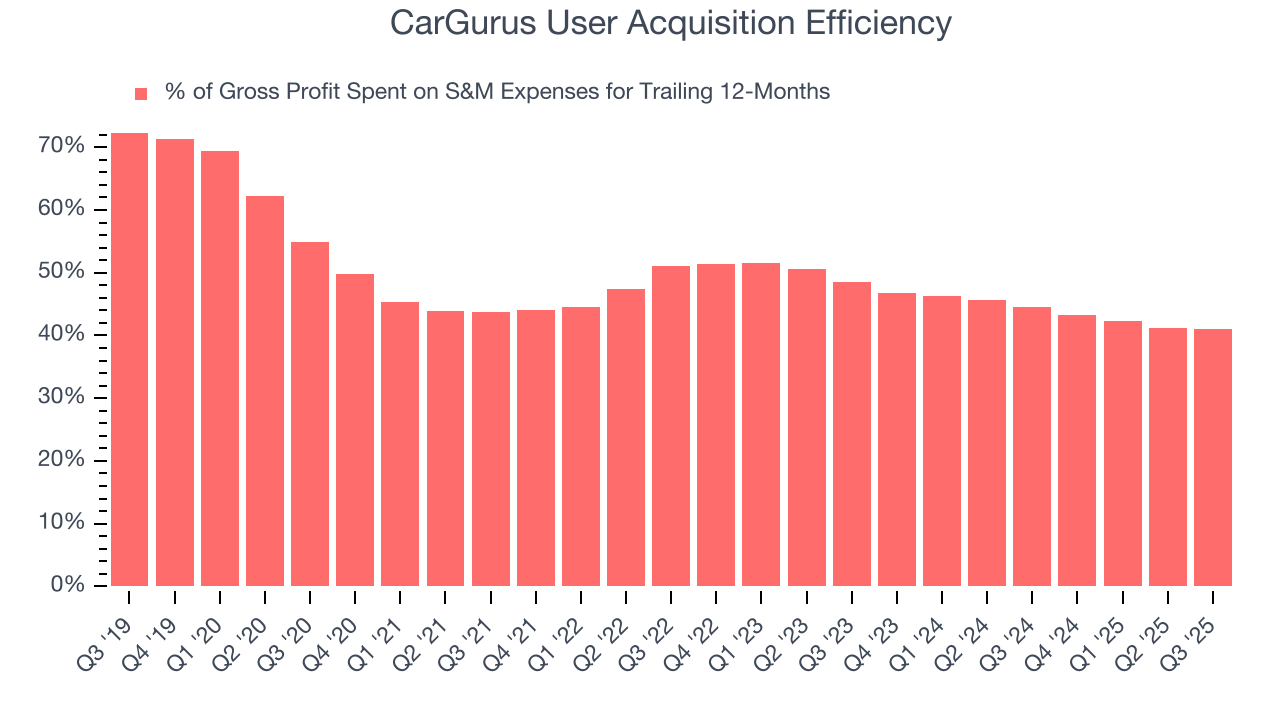
9. EBITDA
EBITDA is a good way of judging operating profitability for consumer internet companies because it excludes various one-time or non-cash expenses (depreciation), providing a more standardized view of the business’s profit potential.
CarGurus has been a well-oiled machine over the last two years. It demonstrated elite profitability for a consumer internet business, boasting an average EBITDA margin of 4,358%. This result isn’t surprising as its high gross margin gives it a favorable starting point.
Analyzing the trend in its profitability, CarGurus’s EBITDA margin rose significantly over the last few years, showing its efficiency has meaningfully improved.
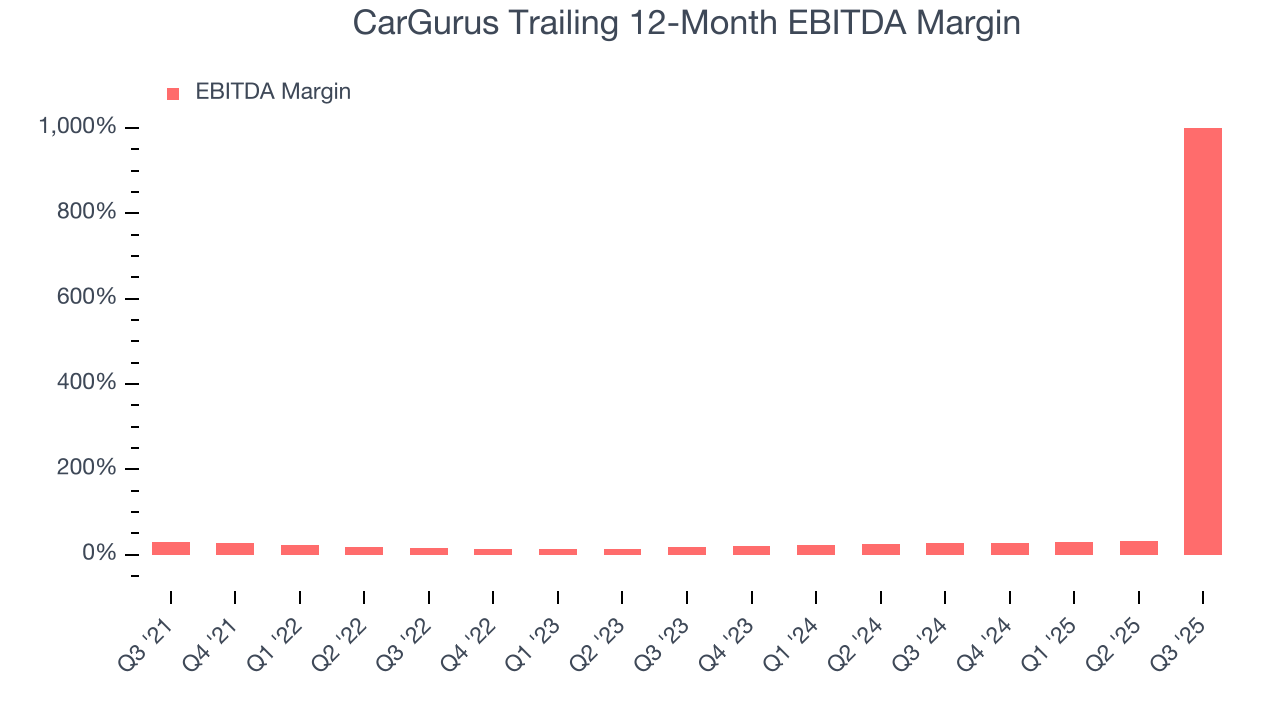
In Q3, CarGurus generated an EBITDA margin profit margin of 32,957%, up 32,928.5 percentage points year on year. The increase was solid, and because its EBITDA margin rose more than its gross margin, we can infer it was more efficient with expenses such as marketing, R&D, and administrative overhead.
10. Earnings Per Share
We track the change in earnings per share (EPS) for the same reason as long-term revenue growth. Compared to revenue, however, EPS highlights whether a company’s growth is profitable.

We can take a deeper look into CarGurus’s earnings quality to better understand the drivers of its performance. As we mentioned earlier, CarGurus’s EBITDA margin expanded by 8,500.7 percentage points over the last three years. On top of that, its share count shrank by 24.6%. These are positive signs for shareholders because improving profitability and share buybacks turbocharge EPS growth relative to revenue growth. 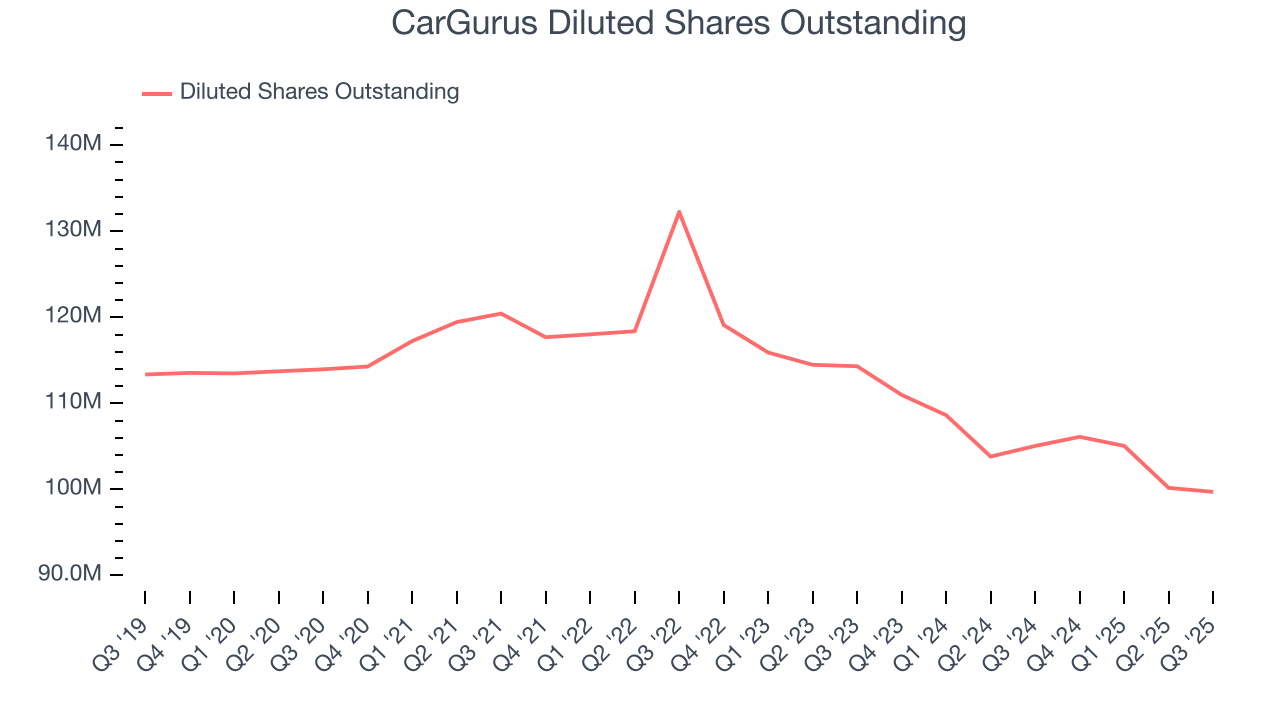
In Q3, CarGurus reported adjusted EPS of $0.57, up from $0.45 in the same quarter last year. This print beat analysts’ estimates by 3.7%. Over the next 12 months, Wall Street expects CarGurus’s full-year EPS of $2.15 to grow 13.7%.
11. Cash Is King
Free cash flow isn't a prominently featured metric in company financials and earnings releases, but we think it's telling because it accounts for all operating and capital expenses, making it tough to manipulate. Cash is king.
CarGurus has shown robust cash profitability, driven by its attractive business model that enables it to reinvest or return capital to investors while maintaining a cash cushion. The company’s free cash flow margin averaged 18.4% over the last two years, quite impressive for a consumer internet business.
Taking a step back, we can see that CarGurus’s margin expanded by 20.9 percentage points over the last few years. This is encouraging because it gives the company more optionality.
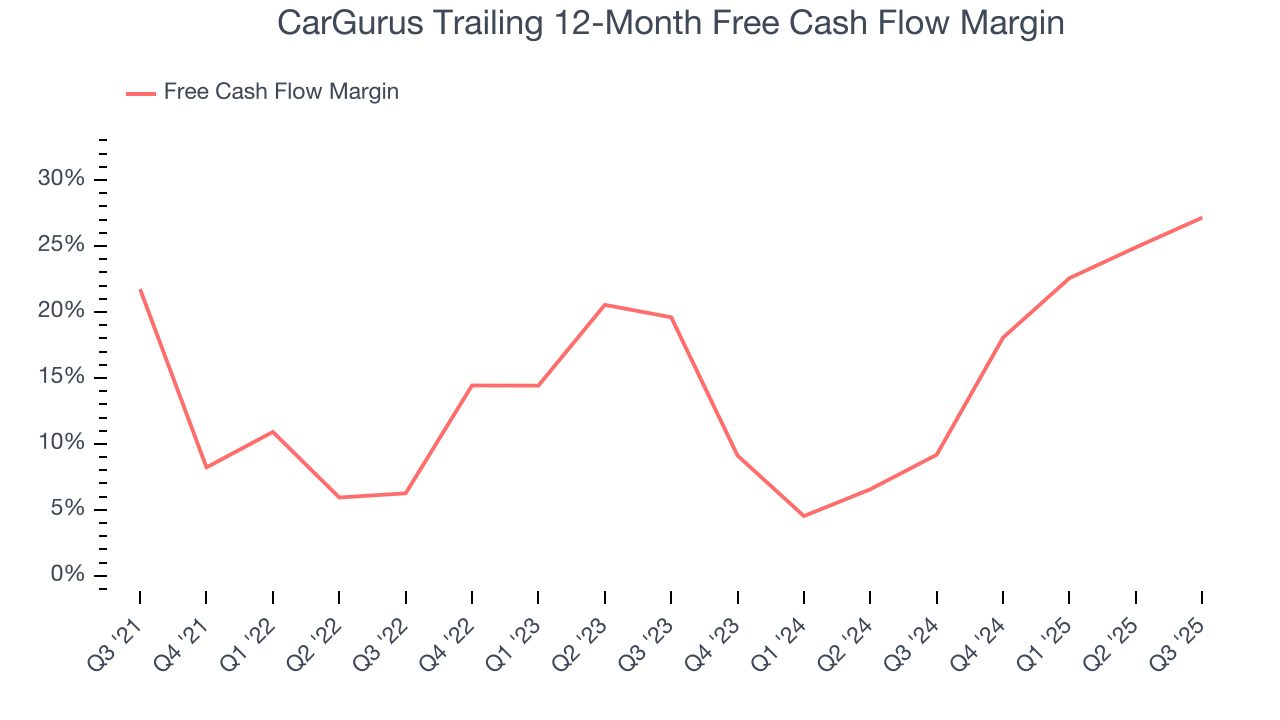
CarGurus’s free cash flow clocked in at $64.01 million in Q3, equivalent to a 26.8% margin. This result was good as its margin was 9 percentage points higher than in the same quarter last year, building on its favorable historical trend.
12. Balance Sheet Assessment
CarGurus reported $178.9 million of cash and $193.3 million of debt on its balance sheet in the most recent quarter. As investors in high-quality companies, we primarily focus on two things: 1) that a company’s debt level isn’t too high and 2) that its interest payments are not excessively burdening the business.
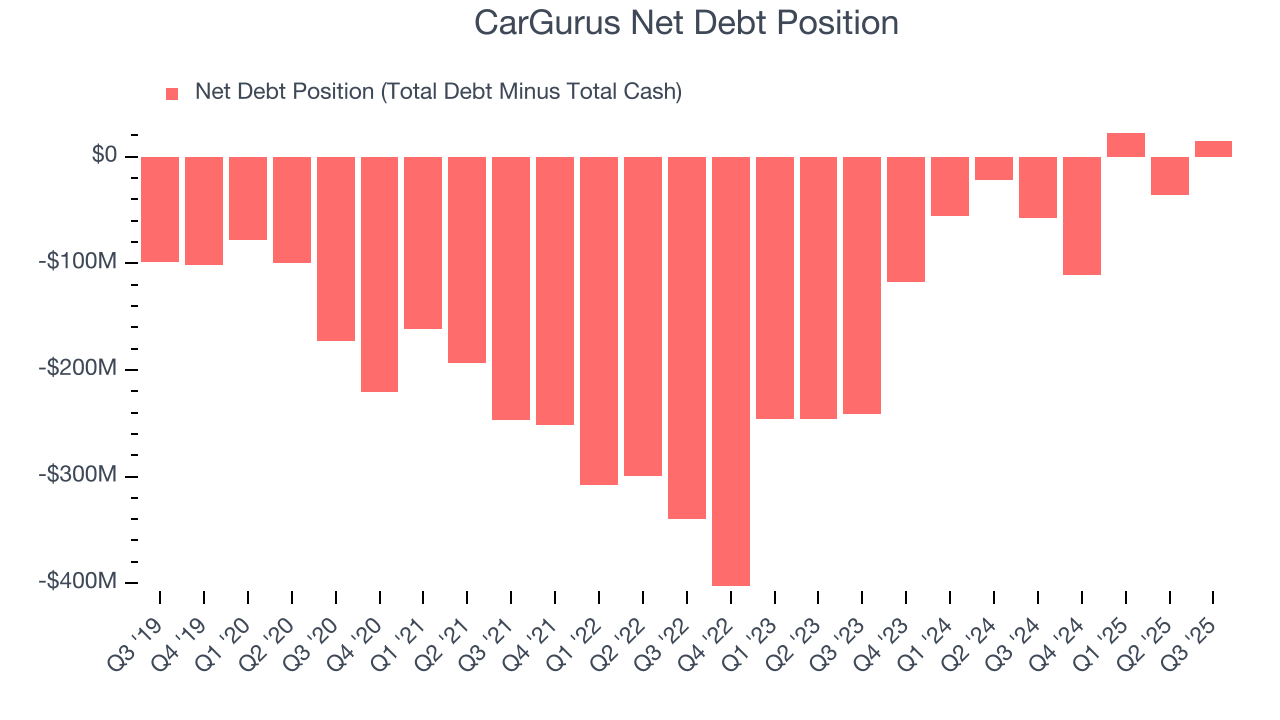
With $78.89 billion of EBITDA over the last 12 months, we view CarGurus’s 0.0× net-debt-to-EBITDA ratio as safe. We also see its $10.65 million of annual interest expenses as appropriate. The company’s profits give it plenty of breathing room, allowing it to continue investing in growth initiatives.
13. Key Takeaways from CarGurus’s Q3 Results
We were impressed by how significantly CarGurus blew past analysts’ EBITDA expectations this quarter. We were also glad its EBITDA guidance for next quarter exceeded Wall Street’s estimates. Overall, we think this was a solid quarter with some key areas of upside. The stock traded up 5.6% to $35 immediately following the results.
14. Is Now The Time To Buy CarGurus?
Updated: December 3, 2025 at 9:25 PM EST
A common mistake we notice when investors are deciding whether to buy a stock or not is that they simply look at the latest earnings results. Business quality and valuation matter more, so we urge you to understand these dynamics as well.
There are some positives when it comes to CarGurus’s fundamentals. Although its revenue has declined over the last three years, its growth over the next 12 months is expected to be higher. And while CarGurus’s growth in users has been lackluster, its impressive EBITDA margins show it has a highly efficient business model. On top of that, its rising cash profitability gives it more optionality.
CarGurus’s EV/EBITDA ratio based on the next 12 months is 10.4x. Looking at the consumer internet space right now, CarGurus trades at a compelling valuation. For those confident in the business and its management team, this is a good time to invest.
Wall Street analysts have a consensus one-year price target of $40.29 on the company (compared to the current share price of $36), implying they see 11.9% upside in buying CarGurus in the short term.
